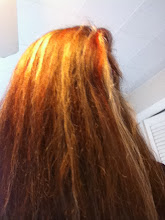While CFL’s DO bring our energy bills down, there is one MAJOR downside that is only now getting much press. When a normal incandescent bulb is ready for the trash can you have glass, some tungsten wire as a filament, a bit of argon gas that escapes when the bulb breaks, and a base of aluminum. It’s a simple job to toss this arrangement into the nearest trashcan or recycling bin. The only two questions that come up in the process of disposing of these items are “Do I chuck this into the glass or the aluminum bin?” and “Drat! Where’s the broom!” It's not that easy with CFL’s. Each CFL bulb contains trace amounts of mercury gas… and this little fact is causing some people to get very nervous.
Mercury is that little silver blob in the bottom of some thermometers. Used for centuries in everything from medicine to fishing lures, it's getting some serious attention these days. From scares in rising levels in seafood – the main cause pregnant women are often warned away from eating it very often – to confusion over its disposal. The EPA has a 9 stage list for cleaning up small mercury spills from broken thermometers, with an equipment list that is just as long. http://www.epa.gov/mercury/spills/index.htm Larger spills require professionals in bulky hazmat suits, cleared buildings, and thousands of dollars in bills. With MILLIONS of CFL bulbs all containing this happy substance the question of what the long term effect on the environment will be is a biggie. Is our fervor over these new gadgets just a case of jumping from the frying pan into the fire? With mercury being blamed with everything from rashes to death, considered as a possible cause of autism in young children, and a proven cause of birth defect… it’s a risky substance to be blithely tossing into the trash every day.
Even the packaging of CFL’s is more involved and riskier than incandescent bulbs. Where the older less energy efficient models are packaged in thin cardboard – easy to recycle- CFL’s come in large plastic bubble packs in order to keep the bulbs from breaking and freeing the mercury. This packaging requires much more effort to recycle, and ultimately more trash to deal with in the long run.
Australia has already mandated the nationwide switch to CFL’s. By 2008 (or 2010, depending on which source you go to) it will be illegal to sell or purchase the old incandescent bulbs in that country. California is fast on their heels, as are many other states in the USA. The bastion of big business, Wallmart, has even jumped into the ring with its 100 million bulb pledge. www.inhabitat.com/2007/01/03/walmart-compact-fluorescent-bulbs/ and http://walmart.triaddigital.com/defaultrendercontent_ektid8822.aspx . It really is no longer a question of whether or not you want to switch from the old standard to the new and improved, instead it has become a question of when. Businesses are realizing there is no profit to be had continuing to manufacture a dinosaur.
So. With all that being said… have I switched? I’ll confess. We used some of our wedding money to buy the bulk packs at Sam’s. 42 light fixtures all faintly humming along, lighting our evening. And they have reduced our monthly electric bill by a noticeable amount. But this is a case of I should have done more research before jumping on the bandwagon. I know I’ve had at least 6 bulbs break in the last year or so and those bulbs got tossed into the nearest trashcan without a single thought or worry. I know I’m not the only one either. There are going to be quite a few floating around in our landfills for years to come, leaking just that little bit of mercury into the environment. It’s a case of having to THINK about my choices a little more, and not just follow the company line. From now on, I’ll be more careful, and… a little more nervous. There are quite a few “green” beliefs that I follow without researching. I have the rotten feeling I’ve just acquired a mountain of homework for myself.
Crap.
An upside IS in the offing, the Prime Geek informs me. CFL’s are not the end of the luminary evolutionary path. They are, at best, a stopgap, until LED’s are perfected. These lights are even MORE efficient, brighter, and able to run on minute amounts of power. Several cities have already switched to LED's to light their street lights and parking decks. At the moment, there are already reading lamps that can be powered for over 4000 hours for $0.80 per year! It's just a matter of time for these new kids on the block to take over. But this time? I’m going to do the reading before I buy.
To safely dispose of CFL’s, take a few moments today and build yourself a disposal box. Find a sturdy box with a snap on lid, nothing too large will be needed. Line the bottom with either sand or kitty litter – clean please. People who work at hazardous waste sites have a rough enough day without you giving them Tiger’s “presents”. - to cushion the bottom and to keep the bulbs from breaking. Each time a bulb burns out, place it inside the box and cover with a bit of sand. Keep the box in the garage or an outside shed of possible, preferably someplace where it won’t be jostled too much. When the box is full, call to find your hazardous material dump site – check places that take batteries and the like. They often will accept CFL’s as well.
Now, if you will excuse me, I’m going to go rethink that Hobbit Hole idea. I bet beekeeping isn’t all that hard.
Monday, July 16, 2007
Subscribe to:
Post Comments (Atom)




No comments:
Post a Comment